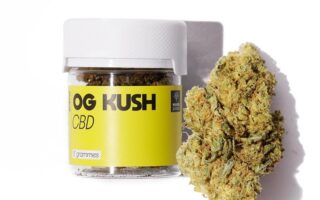Unraveling the Mystery: The Sex of Cannabis
In the vibrant world of cannabis, where lush green leaves sway gently in the breeze and a myriad of aromas fills the air, an essential yet often overlooked aspect comes into play: the sex of the plant. Like characters in a story, cannabis plants can be male, female, or even hermaphroditic, each playing a distinct role in the ecosystem of cultivation and consumption. As legalization advances and the cannabis industry continues to flourish, understanding the sex of cannabis becomes vital—not just for growers aiming for optimal yields, but also for enthusiasts seeking to deepen their appreciation of this complex and multifaceted organism. Join us as we delve into the intriguing biology of cannabis, exploring the significance of plant sex, its impact on cultivation practices, and what it means for the future of this remarkable plant. Whether you’re a seasoned cultivator or a curious newcomer, the journey through the world of cannabis sex is sure to enlighten and inspire.
Table of Contents
- Understanding the Gender of Cannabis Plants and Its Impact on Cultivation
- The Role of Male and Female Cannabis: Distinguishing Traits and Benefits
- Optimal Breeding Strategies: Harnessing the Power of Cannabis Sex
- Managing Cannabis Fertility: Tips for Maximizing Yield and Quality
- Q&A
- Closing Remarks
Understanding the Gender of Cannabis Plants and Its Impact on Cultivation
In the fascinating world of cannabis cultivation, understanding the gender of the plants plays a crucial role in determining the success of your grow. Cannabis is a dioecious plant, meaning it has distinct male and female forms, each serving a unique purpose in the reproduction process. Female plants are the primary cultivators of the sought-after flowers or buds, which contain the highest concentrations of cannabinoids. Conversely, male plants produce pollen and are often removed from cultivation areas to prevent pollination, which can lead to seed formation and a decrease in bud potency. This distinction highlights the importance of identifying and managing the gender of your cannabis plants early in their growth cycle.
To properly assess the gender of cannabis plants, growers should look for certain visual indicators during the pre-flowering stage, typically around 4 to 6 weeks of age. Male plants will display small, round pollen sacs, while female plants will develop white, hair-like stigmas protruding from the calyx. Knowing these differences allows you to make informed decisions, optimizing your cultivation strategy. Below is a quick reference table for identifying gender:
| Plant Gender | Identifying Features |
|---|---|
| Male | Round pollen sacs, no stigmas |
| Female | White hairs on calyx, swollen buds |
Understanding these characteristics not only promotes successful growth but also enhances overall cannabis quality. Adequate preparation for managing both genders ensures that growers can maximize yield while minimizing unwanted seeds, leading to a more fruitful harvest. By mastering this essential aspect of cultivation, you can take significant strides toward creating the ideal environment for thriving cannabis plants.
The Role of Male and Female Cannabis: Distinguishing Traits and Benefits
In the world of cannabis, understanding the distinct characteristics of male and female plants is crucial for both cultivation and consumption. Female cannabis plants are renowned for their ability to produce cannabinoids, such as THC and CBD, due to their flowering structure. However, they require more attention, particularly during the flowering stage, which is essential for maximizing yield. Their buds are the treasure trove for enthusiasts seeking out the medicinal and recreational benefits of cannabis. On the other hand, male cannabis plants, often overlooked, play a pivotal role in breeding and genetic diversity. They produce pollen which can fertilize female flowers, leading to the creation of new strains and hybrids; they also generate unique compounds that can have beneficial properties when cultivated properly.
When it comes to utility, both sexes possess unique attributes that can serve different purposes. Here are some distinctions that highlight their respective benefits:
- Female Cannabis: Higher cannabinoid content, preferred for recreational and medicinal use.
- Male Cannabis: Vital for breeding, producing seeds and maintaining genetic diversity.
- Value in Cultivation: Female plants are typically harvested for their buds, while male plants can be composted or used for fiber.
- Cultural Significance: Female plants resonate more in popular media and discussions, yet males are essential for sustainable cannabis farming practices.
In the pursuit of cultivation knowledge, recognizing these differences helps growers make informed decisions about how to manage their plants effectively. Here’s a quick comparison that summarizes key attributes:
| Trait | Female Cannabis | Male Cannabis |
|---|---|---|
| Produces Flowers | Yes | No (produces pollen) |
| Cannabinoid Production | High | Low |
| Use in Consumption | Commonly used | Less favored |
| Breeding Role | Limited | Critical for creating new strains |
Optimal Breeding Strategies: Harnessing the Power of Cannabis Sex
Understanding the sex of cannabis plants is crucial for successful breeding, as it directly influences yield and genetic diversity. By recognizing the male and female plants early, growers can maximize their production and enhance the quality of their harvest. Key strategies for achieving optimal breeding include:
- Sexing Seeds: Identifying the genetic sex of seedlings at an early stage can help breeders focus on the female plants, which are sought after for their potent flowers.
- Selective Pollination: Utilizing male plants to pollinate selected female plants can produce seeds with desirable traits, enhancing the gene pool and encouraging diversity.
- Feminized Seeds: Producing seeds that only yield female plants boosts reliability and efficiency for growers looking to streamline their operations.
Moreover, employing innovative techniques such as cloning and maintaining healthy mother plants can ensure a steady supply of top-quality genetics. The following table summarizes some effective breeding practices:
| Practice | Benefit |
|---|---|
| Regularly Remove Males | Prevents unwanted pollination, ensuring higher yields of seedless buds. |
| Monitor Plant Stress | Healthy plants produce better genetics and more robust offspring. |
| Utilize Genetic Testing | Accurately identify traits and optimize breeding plans for desired characteristics. |
Managing Cannabis Fertility: Tips for Maximizing Yield and Quality
In the realm of cannabis cultivation, understanding the sex of your plants is paramount for maximizing both yield and quality. Cannabis plants exhibit two primary sexes: male and female. Only female plants produce the coveted buds, while male plants primarily produce pollen. Effective management of the plant’s sex can significantly influence your harvest. To optimize your crop, consider the following tips:
- Early Identification: Regularly inspect your plants around the 4-6 week mark for pre-flowers, which can help you distinguish between male and female. Female pre-flowers display a pear-like shape, whereas males have a more elongated structure.
- Control Environmental Conditions: Ensure optimal lighting, temperature, and humidity levels to encourage healthy growth. Stress factors can cause plants to become hermaphroditic, negatively impacting bud quality.
- Clone Carefully: When you find a desired female plant, take clones to guarantee the same genetics. This ensures consistency in future crops and maximizes yield potential.
Another crucial aspect of managing cannabis fertility involves maintaining a balanced nutrient regimen. Over-fertilizing can cause nutrient burn, altering the plant’s growth cycle and potentially affecting sex expression. Pay attention to these nutrient considerations:
| Nutrient | Purpose |
|---|---|
| Nitrogen (N) | Supports leafy growth and overall plant health, crucial during the vegetative stage. |
| Phosphorus (P) | Essential for root development and flowering, critical during the transition to the flowering stage. |
| Potassium (K) | Enhances bud quality and aids in water regulation, vital for flowering plants. |
By maintaining a keen eye on your plants’ sex and nutrient intake, you can effectively create an environment that not only enhances yield but also ensures the quality of the final product. Understanding and actively managing these factors can set apart average harvests from exceptional ones.
Q&A
Q&A: Understanding the Sex of Cannabis Plants
Q1: What does it mean when we refer to the “sex” of cannabis?
A: When we talk about the sex of cannabis, we are primarily referring to the distinct reproductive structures that each plant can produce. Cannabis sativa, the species known for its psychoactive and medicinal properties, has male and female plants, as well as hermaphroditic individuals. The sex of the plant is crucial in determining the type of cannabis products that can be cultivated.
Q2: How can you tell the sex of a cannabis plant?
A: Cannabis plants can typically be sexed during the pre-flowering stage, when they are around 4 to 6 weeks old. Male plants will develop small, round pollen sacs at the nodes, which look like tiny green balls. In contrast, female plants will develop wispy white hairs called pistils. Hermaphroditic plants may exhibit traits of both male and female, complicating the process.
Q3: Why is it important to identify male and female cannabis plants?
A: Identifying the sex of cannabis plants is essential for growers, especially those seeking to produce sinsemilla (seedless flower). Male plants pollinate female plants, leading to seed production and reducing the potency of the buds. Therefore, many cultivators choose to remove male plants to enhance yield and quality.
Q4: What happens if a male cannabis plant is left to grow?
A: If male cannabis plants are allowed to mature, they will produce pollen that can fertilize female plants. This results in seeds forming within the buds, significantly affecting the overall quality and potency of the final product. For growers aiming to harvest high-quality cannabis for consumption, avoiding male pollination is critical.
Q5: Can cannabis plants change sex?
A: Yes, cannabis plants can exhibit a phenomenon known as “hermaphroditism,” where a plant displays both male and female reproductive structures. This can occur due to environmental stressors, genetics, or poor growing conditions. Growers should monitor their plants closely to manage any hermaphroditic traits that may develop.
Q6: Are there benefits to having male cannabis plants?
A: Absolutely! While male plants are often removed to prevent pollination, they do have their advantages. Male cannabis plants can be used in breeding programs to create new strains and contribute to genetic diversity. Additionally, they can yield materials like hemp fiber and seeds, which have various industrial and culinary uses.
Q7: How can I tell if I have a hermaphrodite plant?
A: A hermaphrodite plant will show both male pollen sacs and female pistils. If you notice a single plant developing characteristics of both sexes, it’s crucial to act quickly. You can remove the male structures or segregate the plant to prevent it from pollinating your female plants.
Q8: Is there a way to grow only female cannabis plants?
A: Yes! Seed banks offer feminized seeds, which are genetically modified to eliminate male chromosomes, thereby ensuring that nearly all plants grown from them will be female. This approach is popular among home growers and commercial operations aiming for maximum bud production without the interference of male plants.
Q9: What role does genetics play in determining the sex of cannabis plants?
A: Genetics plays a significant role in determining the sex of cannabis plants. Most commercial cannabis strains are bred for specific traits, and the genetic lineage can provide insight into the likelihood of producing males or females. However, environmental factors can also influence sex expression, making this a complex area of study.
Q10: What advice do you have for someone new to cannabis cultivation?
A: For beginners, it’s essential to start with feminized seeds to streamline the process and avoid the complexities of sexing the plants. Additionally, staying informed about growing conditions, genetics, and observing your plants closely will help you develop a deeper understanding of cannabis cultivation. Remember: every plant has its own story to tell!
Closing Remarks
As we draw the curtain on our exploration of the fascinating world of cannabis sex, it’s evident that understanding the gender of this remarkable plant goes beyond mere botany. The implications stretch into cultivation, breeding, and even the nuanced experiences of users. Whether you’re a seasoned cultivator, a curious novice, or simply someone intrigued by the plant’s mysteries, recognizing the importance of identifying male, female, and hermaphrodite cannabis can empower your journey.
As the dialogue around cannabis continues to evolve, so too does our appreciation for its complexity. Each aspect, from genetics to the effects of terpenes, paints a more complete picture of what makes cannabis a compelling subject of study and enjoyment. In this dynamic landscape, staying informed about the sex and its significance opens new avenues for responsible cultivation and enlightened consumption.
cannabis is not just a plant; it’s a conversation starter, a cultural touchstone, and for many, a source of healing and inspiration. As you venture into your own cannabis experiences—whether through planting, sharing, or simply enjoying—remember that every bud tells a story, and every journey begins with understanding its roots.



